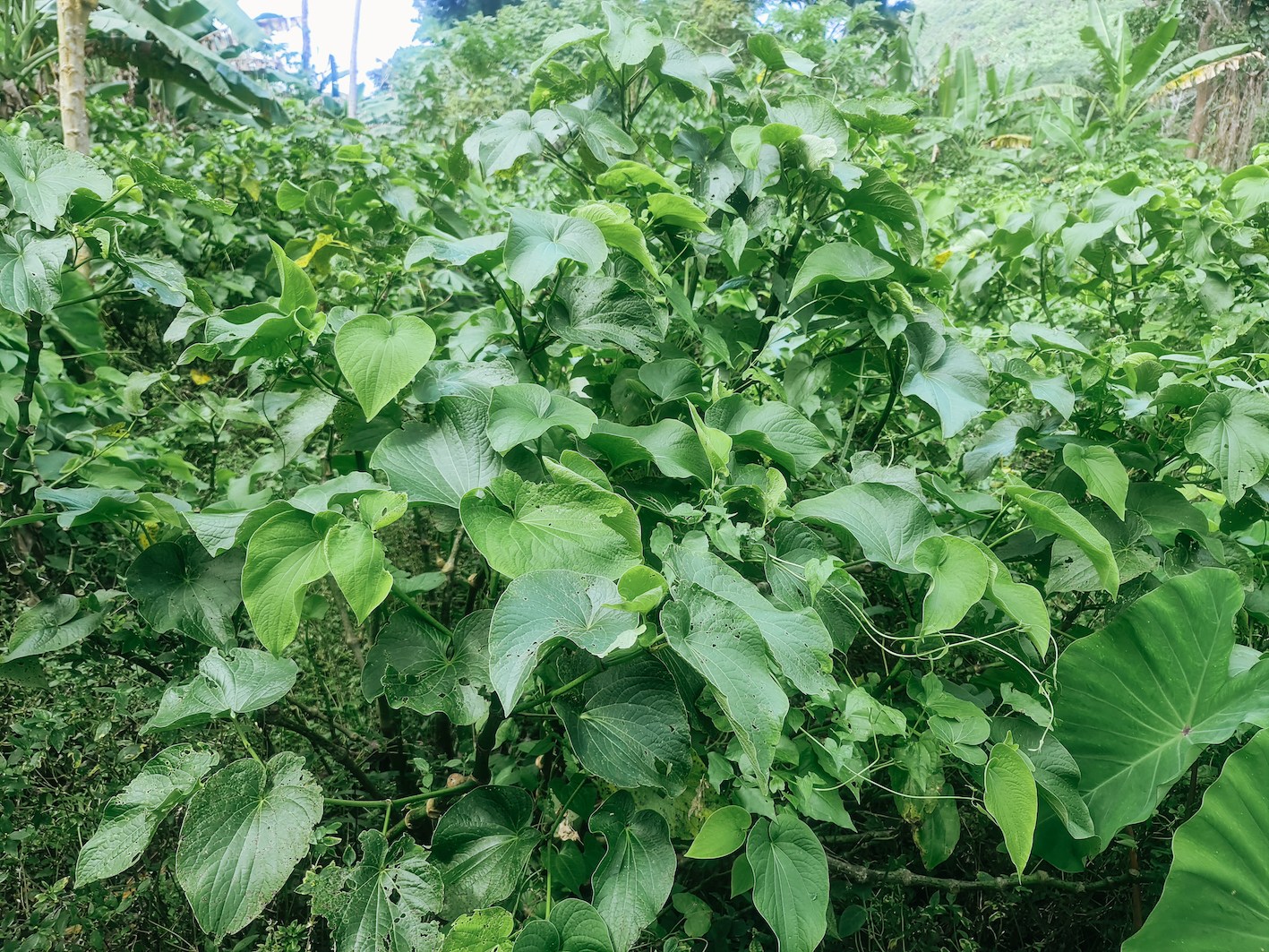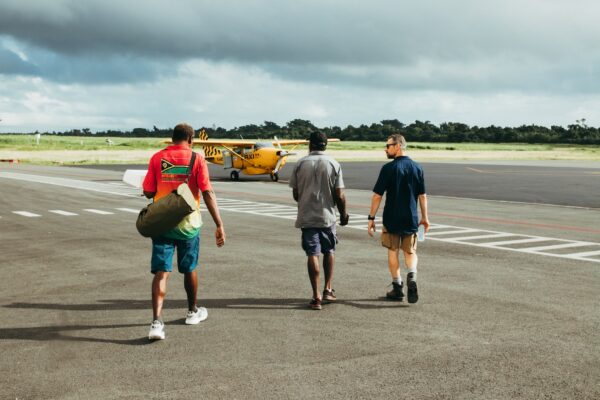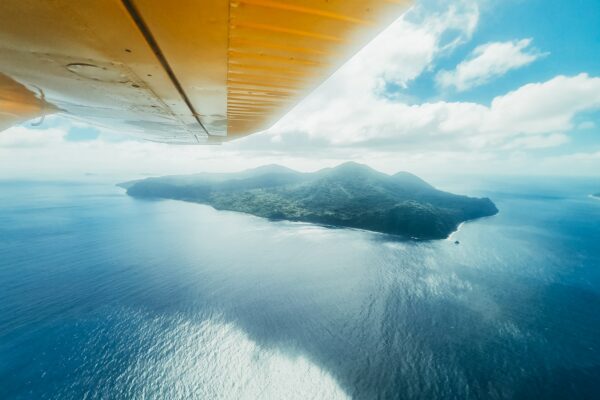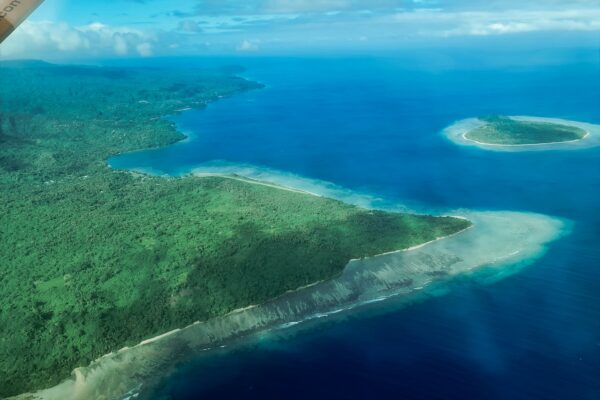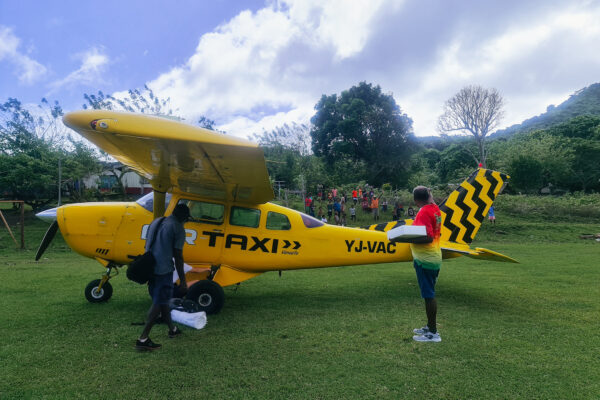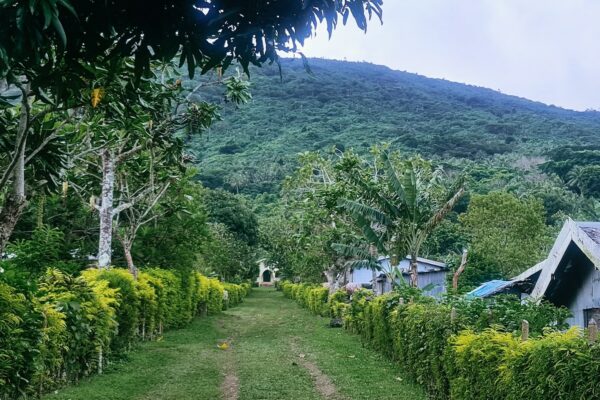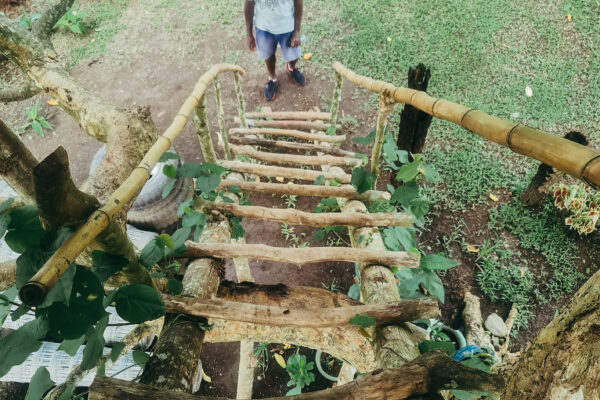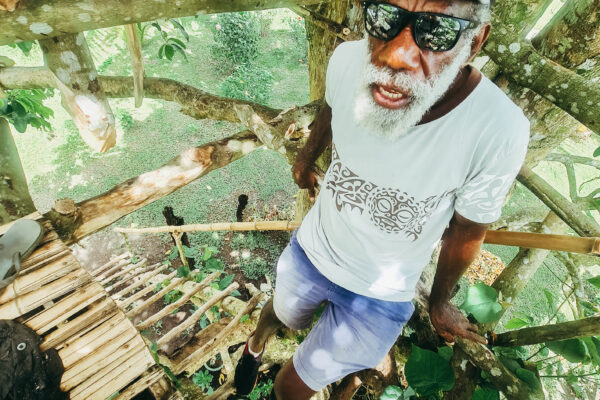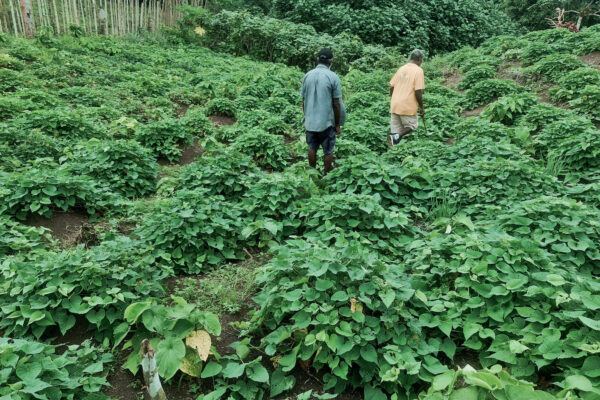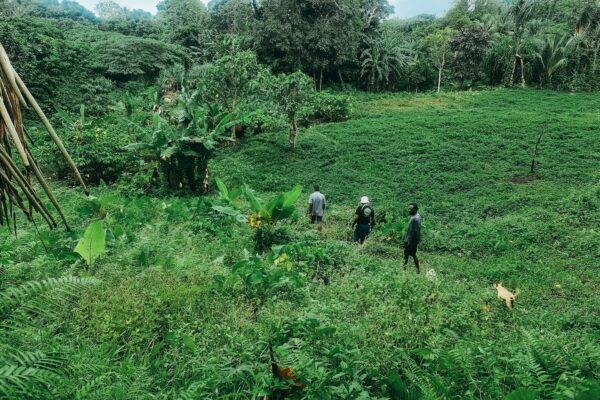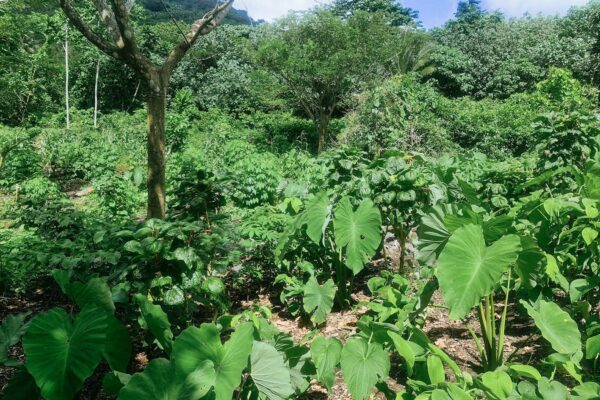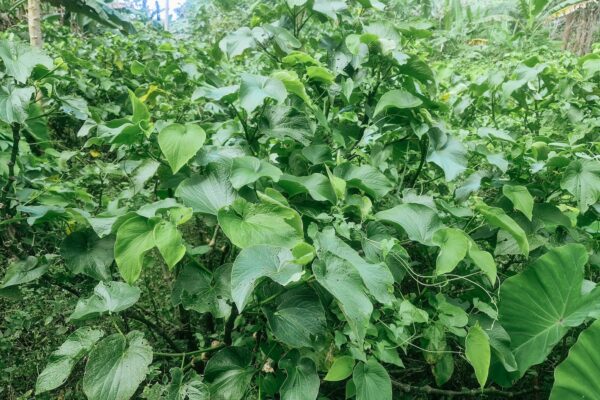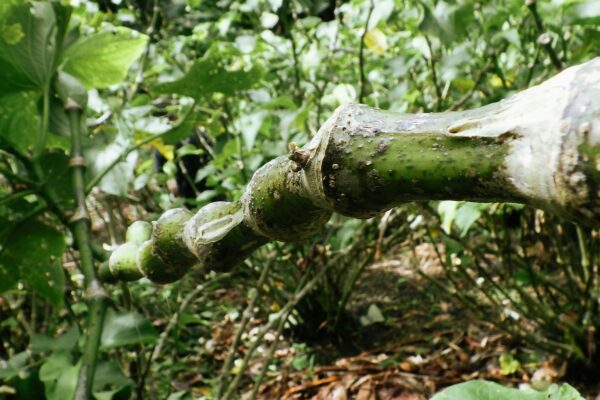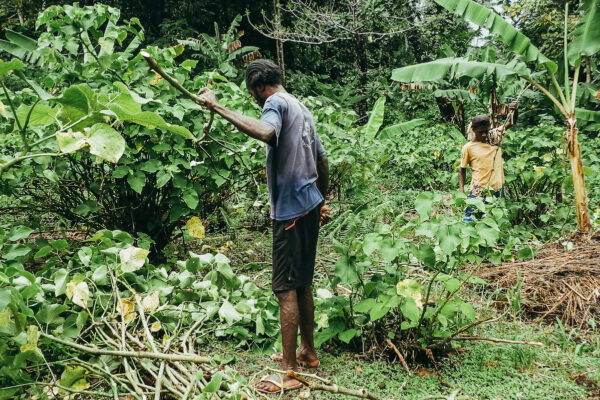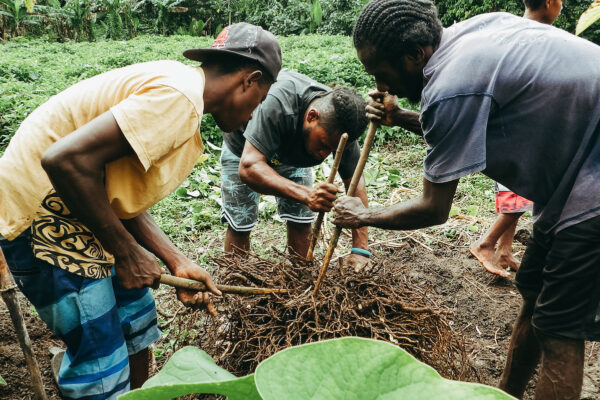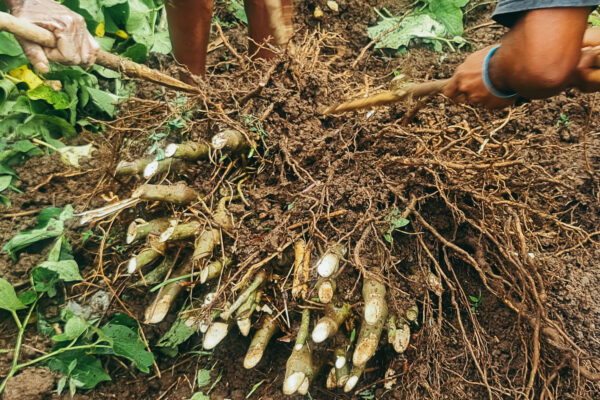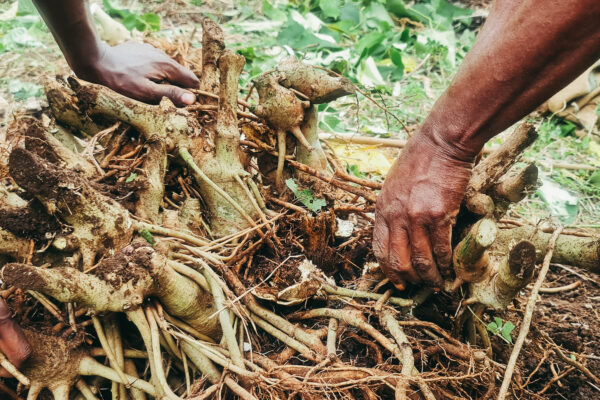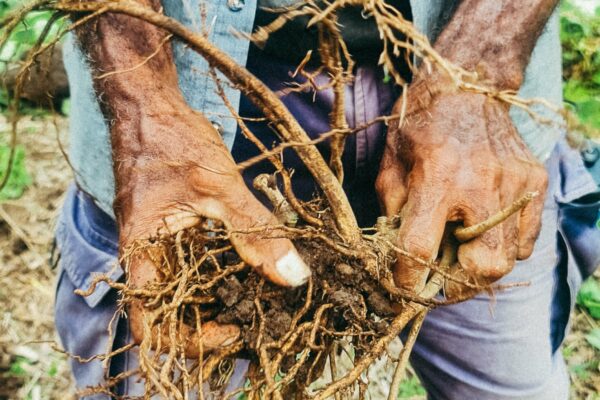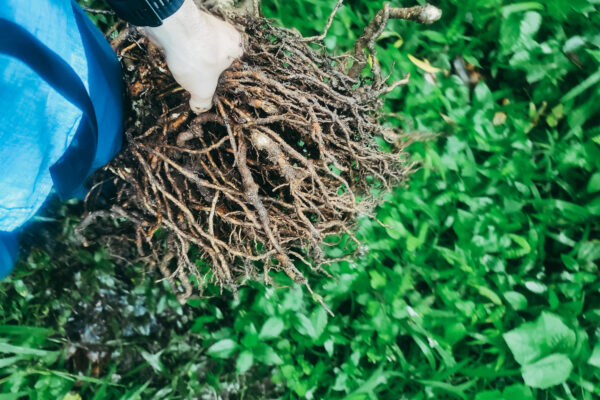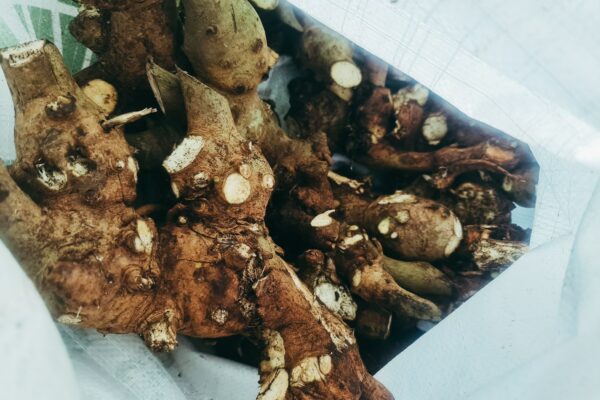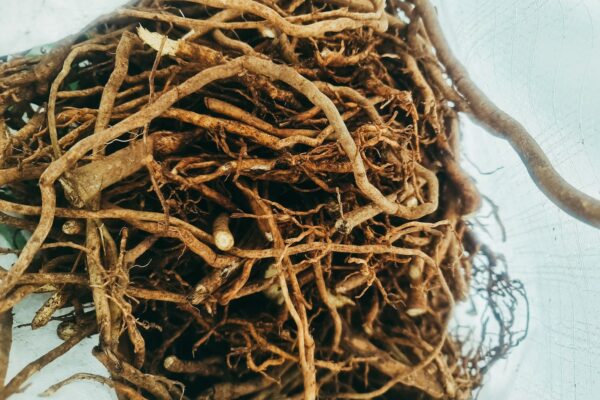Puariki Limited Edition
A Superlative Kava, Found Nowhere Else but on the Remote Island of Tongoa, Vanuatu.
It is with pleasure that we wish to introduce to a privileged few and for a short time only, R&P Puariki; Tended to with care for 7 long years on Tongoa, then harvested by hand and transported direct by air charter to our facility on Santo, where it was immediately processed and packaged fresh to preserve its exceptional character, for your enjoyment of the unique experience that only this kava can provide.
We’ve seen small amounts of kava purported to be this distinctive cultivar pop up on the market on rare occasions over the years, and we’ve collected a specimen or two for analysis in our research and development laboratory before, but this is the first time we’ve found, harvested, transported, processed, packaged, and exported enough of this very special single-cultivar kava that we are now able to offer limited amounts of it to share with you, some of our most fortunate Root & Pestle customers.
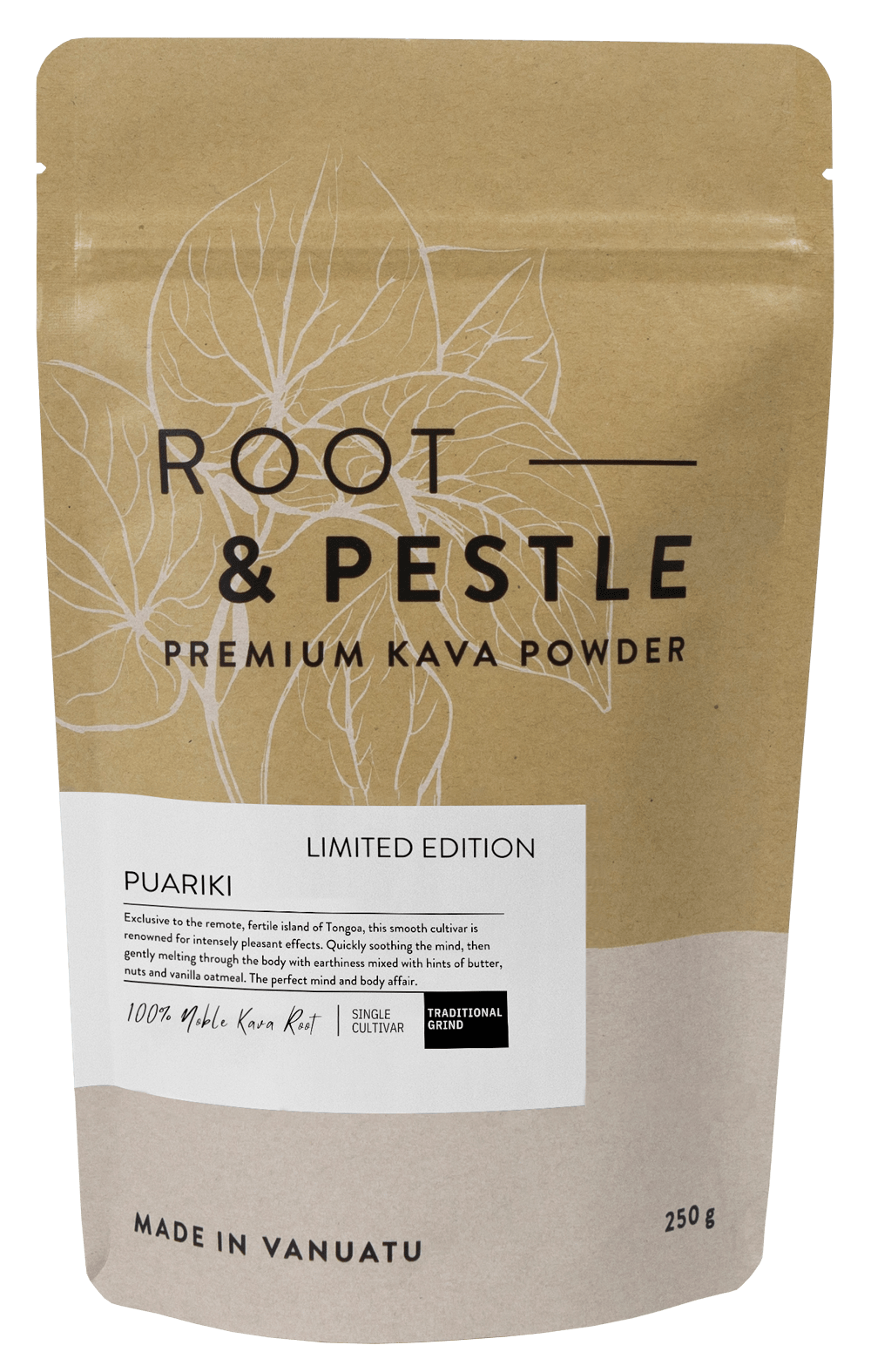
Cultivars of Tongoa
There are two distinct cultivars of kava endemic to Tongoa – a vigorously growing plant with long branches between nodes and a root ball that rapidly becomes a mammoth which can weigh upwards of 60 kg at harvest, and a much slower growing plant with more closely spaced nodes and a large, but much more modest root ball, which at maturity (after 5 to 7 years of careful cultivation) is typically in the 10 to 25 kg range. These two cultivars are known ubiquitously amongst Tongoans as Buariki and Bualieu, derived automatically from their word for kava, bua, and their words for small and big, riki and lieu, respectively, but with the difference between the Tongoan pronunciation of “P” and “B” sometimes being a little difficult to discern by the non-Tongoan ear, and the notoriously wide range of spellings for any given word in Bislama (the common tongue of Vanuatu), Buariki and Bualieu were first recorded off the island as Puariki and Pualiu, and subsequently made their way into the Vanuatu Kava Act (2002) as such. Hence “Buariki” isn’t listed as one of the varieties of noble Vanuatu kava officially permitted for export, and as such is always labelled within Vanuatu for export as Puariki, even though on the rare occasion a sample has made its way overseas it has sometimes been promoted as something with a similar sound or spelling, such as Boariki or Pauriki. As with many things, it is easy for a few of the details to get lost in translation, but whether you want to call it Pauriki, Puariki, Boariki, or Buariki, one thing is for sure: This is some seriously nice kava.
Buariki
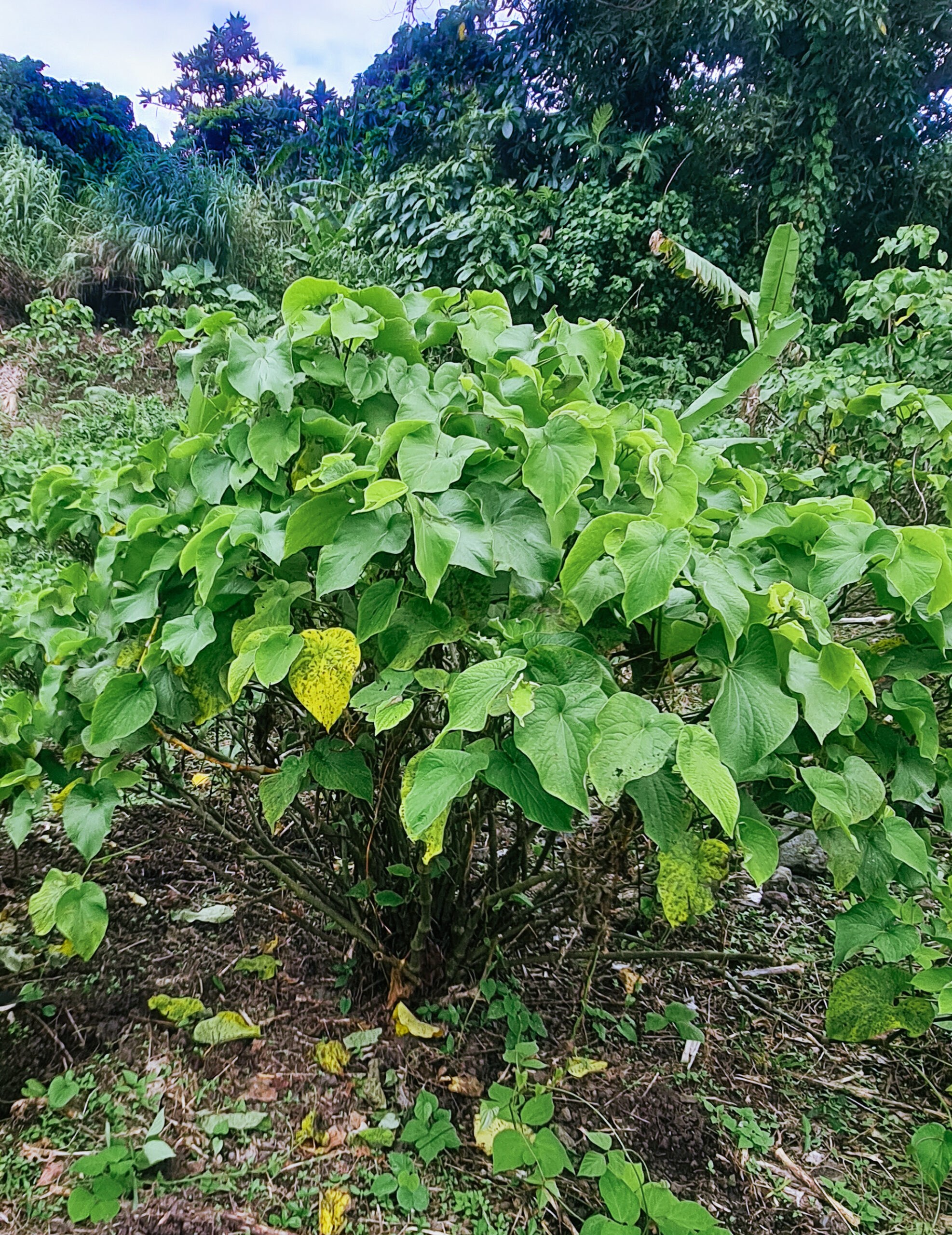
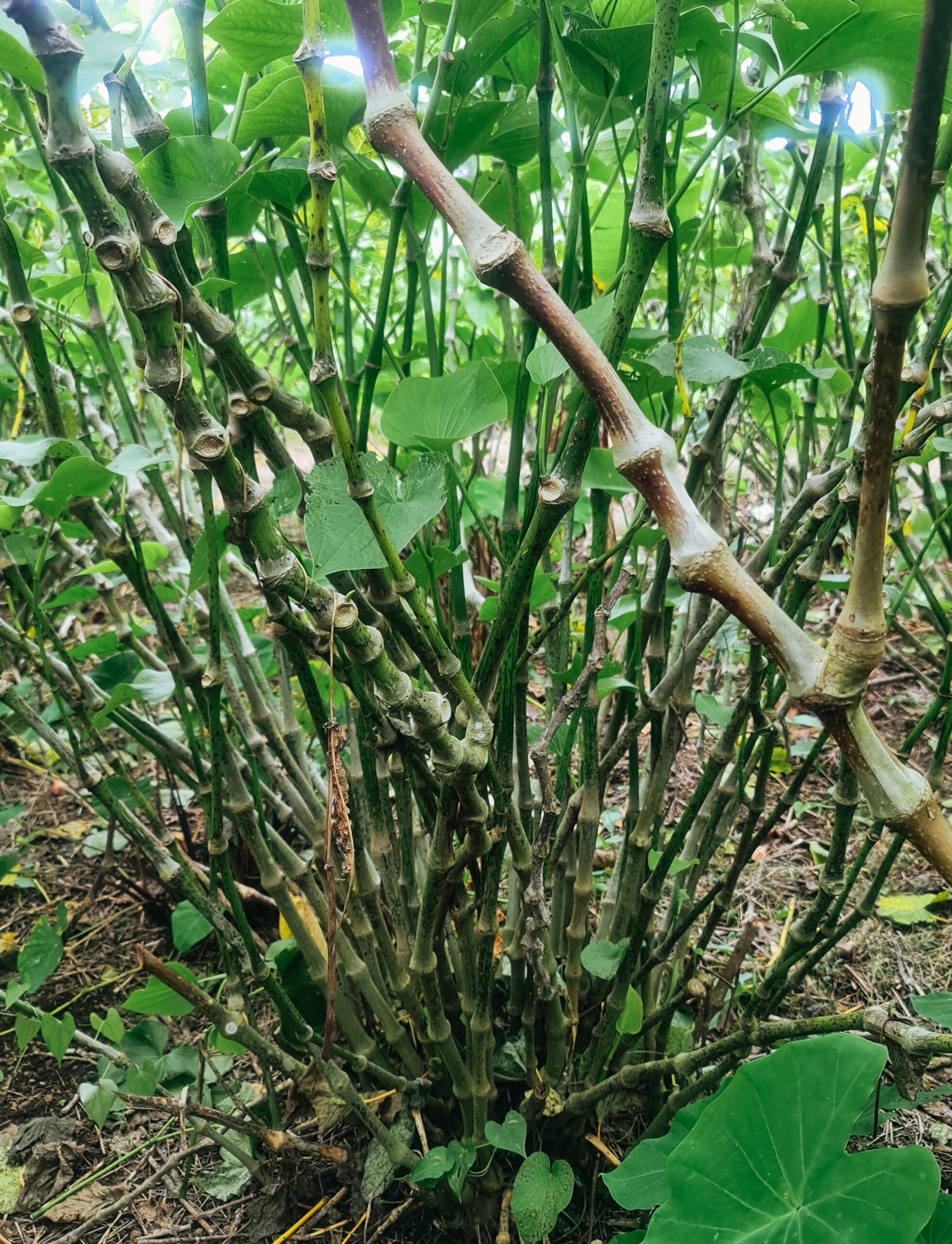
Bualieu
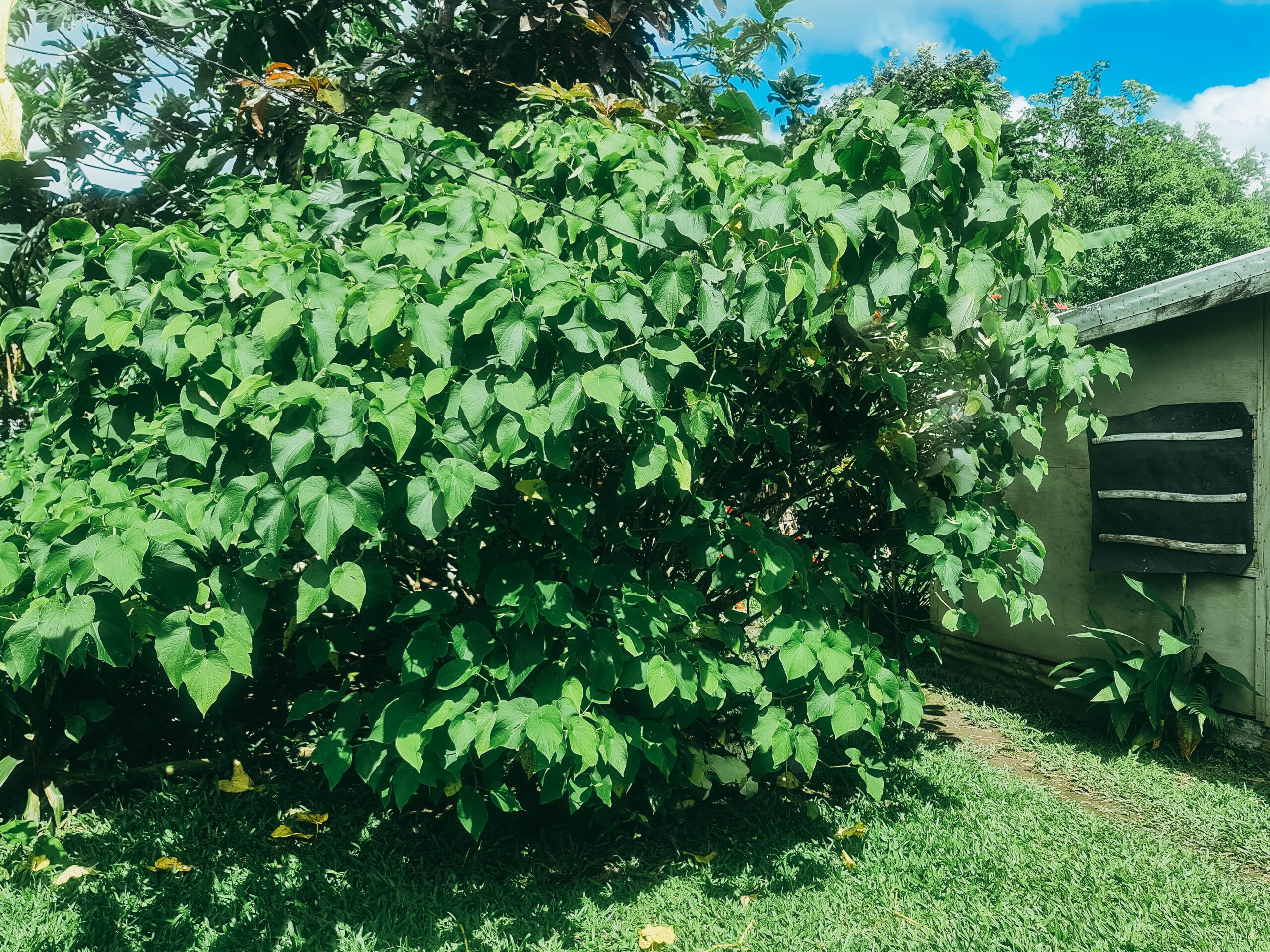
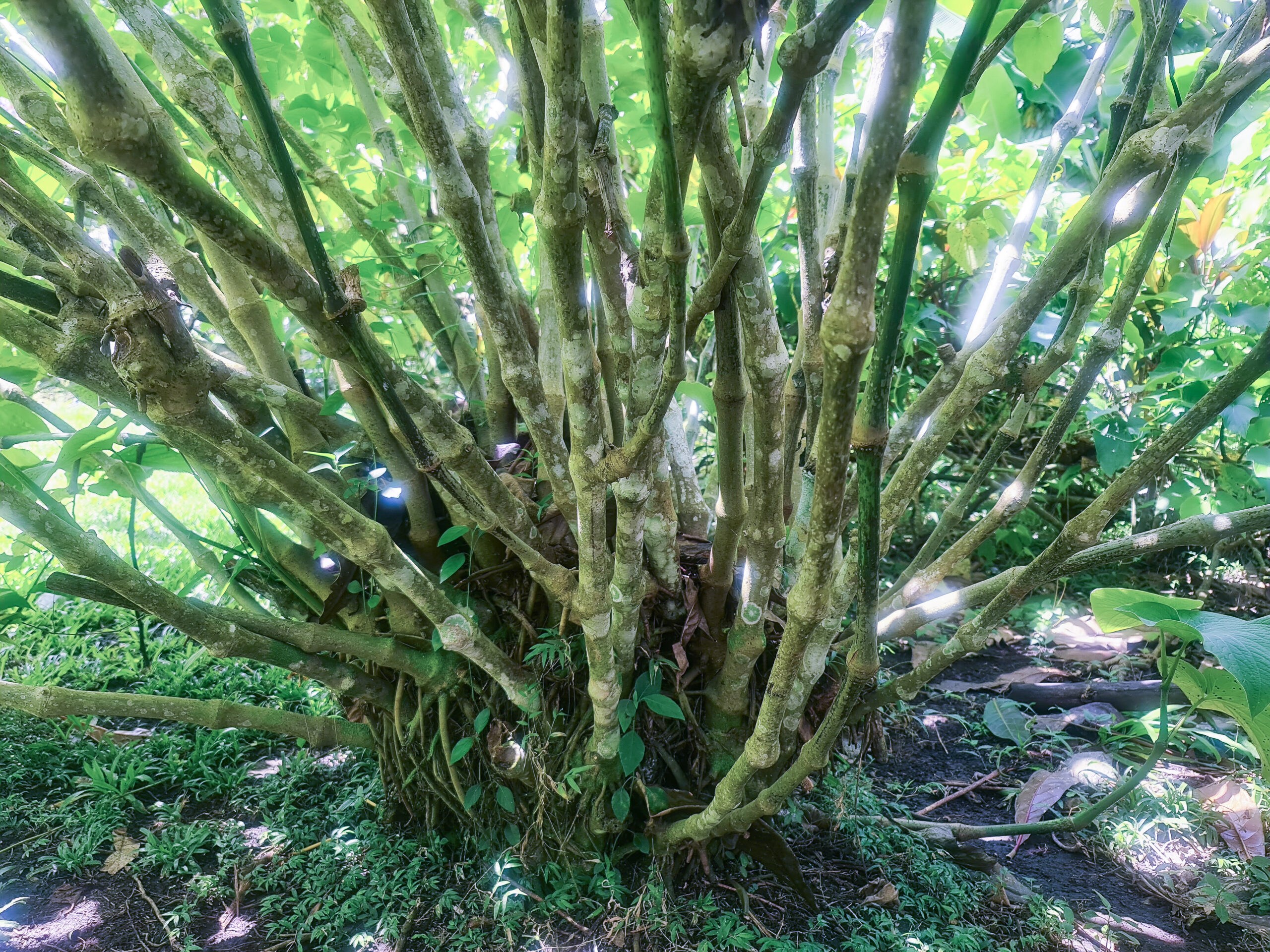
The photographic perspective might make it a bit difficult to tell at first glance, but the Buariki (top left and right) is absolutely dwarfed by the massive Bualieu (bottom left and right). The Bualieu shown is nearly twice as high and about three times as wide as the Buariki, even though it was not planted any earlier. The characteristic brown nodes of a nearby Borogoru can be seen in the foreground of the Buariki root ball (above right) – monoculture is a foreign concept on Tongoa.
An Icon of Pride
In the language of the locals, true Tongoan kava is either the big one or the small one, and everything else was introduced from other nearby islands in contemporary times, and is cultivated only in relatively small quantities, a bit like a novelty crop. The farmers are proud of their stands of Borogoru, their “Kava from Tanna” (almost certainly Kelai, which was probably brought to Tanna from Epi…), and their very limited specimens of “Chief’s Kava” (as yet a mystery, but I’m sure we’ll get back to Tongoa to thoroughly check it out at some point), amongst the Bualieu and Buariki, because variety is of course the spice of life, but when asked about their favourite cultivar, the answer is consistently given with pride and is almost uniformly the same: Buariki.
Why? Well, from our own perspective, this is the first time we’ve had enough kava to the point where we literally could not walk properly and yet the next morning awoke and felt as if we hadn’t consumed any kava the night before. Great effect. Great sleep. Zero hangover. Easy transition back to daytime the next morning, and to be clear, we were physically obliterated. In short, it was amazing. Are we biased? Yes, probably, and so is every Tongoan, but nevertheless, this stuff is good. Clean drinking. Very easy to swallow, shell after shell (if you’re so inclined), easy on the stomach and on the mind, but of course, as we were reminded by the friends of the person who squeezed it, that does depend too upon the preparation… Regardless, this was obviously something special.
What do People Say it’s Like?
When our friends at the Kava Society in Auckland, New Zealand got their hands on some powder made from a single plant of this rare and legendary cultivar a few years ago as part of our research and development efforts, the few patrons who were lucky enough to try a sample clearly agreed that they were experiencing something phenomenal. They told us that they absolutely loved the fresh aroma and the smooth drinking experience, but above all, they were impressed by how outstanding the effects were; They proclaimed that it delivered a clearly blissful, highly pleasurable start, followed by fascinating, but not overpowering depth, with at least one Aucklander calling it, “Kelai, but with an extra engine”.
Survival of the Fittest
Hunting a rare and precious cultivar of exceptional quality, a kava found exclusively on the remote Vanuatu island of Tongoa, deep in the rainforest jungle; We were there to find, harvest, prepare, and reap the elixir of wonder which could only be concocted from this one legendary strain of kava, and this was no ordinary crop of Puariki either; Having miraculously survived volcanic ash deposits, damaging winds and debris resulting from storms and tropical cyclones, including Niran and Yasa (both category 5!), as well as the Granddaddy of them all, Harold (category 5, with 278 km/h winds and a mind bogglingly vast diameter of 3741 km), this was a plantation of mature, 7-year old beauties, which by no means should have persisted, and yet they did. We have ensured the celebration of their reaching of perfection would be made worth it in the end by sharing them with the greatest afficionados, connoisseurs, and kava fans around the world, you, our friends.



Kava is not an especially hardy plant, and the cyclones of the past few years have been particularly savage here in Vanuatu, and yet, by some gift of the gods, this special field of Puariki, with its dense perimeter of luscious jungle and mountainous terrain, had somehow been spared. In fact, cyclone Pam, the second most intense tropical cyclone in the South Pacific in all of recorded history, and which devastated Vanuatu in March, 2015, may have been partially responsible for providing the birthplace of this little patch of glorious Puariki, having ripped to shreds the vegetation that formerly had taken hold of the terrain here, and giving necessary reason to the immediate planting of this crop, at this exact time and place, just as the storm passed and local villagers began piecing their lives back together.
And so, by whatever natural wonders, and with plenty of intervention from their Ni-Vanuatu caretakers, these small stems of a previously shredded crop were planted and tended to with the attention and support necessary to bring them to their absolute peak of perfection; We know, we’ve had hundreds of cultivars through our facility and these plants are in a league of their own. We knew it from the rumours and stories. We knew it when we saw them in person. Once we tried out that creamy cocktail of cashewy delight, fresh from the soil in Tongoa, we would never be the same – we, as lovers of kava, had truly been spoiled.
An Adventurous Harvest for the Freshest Kava
We took a small, 5-seat airplane to Tongoa from our processing facility in Santo, but we needed to arrange Air Taxi Vanuatu’s 9-seater for the return trip: We knew we needed to bring as much of this kava home as we could possibly carry, and that was the biggest aircraft we could safely land on Tongoa, not to mention that there aren’t many carriers here, and those are Air Taxi Vanuatu’s 2 options…
Our processing facility is only a couple hundred kilometres to the Northwest of Tongoa, which is only a bit over an hour or so away by plane, so the good news is that we were able to get the kava back to our facility so soon after harvest, that people just a village or two away from where it was harvested from wouldn’t even be able to get it as fresh. Our cutting edge processing techniques mean that we can lock in the freshness, the flavour, the kavalactones, and the experience of drinking this kava as if you were here with us during the harvest, but with the ability to keep it shelf stable for years, so that we can get it to you anywhere in the world, if you place your order while it lasts… which we’re sure won’t be long. This means that you too can be as truly spoiled as we have been, and we truly hope that you are one of the lucky ones who gets to share with us in the pleasure of this special cultivar.
Chemotypical Specifics
To assuage those with a bit of a technically inquisitive mind, the chemotype of the finished product is 423156. This kava root powder is a perfect blend of lateral roots and rhizome (basal chips) in the ratio provided by nature as found in the plant at maturity, with the basal chips weighing about twice as much as the lateral roots at the time of harvest.
The relative kavalactone content of this special R&P Puariki was found to be:
Kavain = 32.62%
Dihydrokavain = 30.76%
Yangonin = 12.22%
Desmethoxyyangonin = 11.03%
Dihydromethysticin = 6.99%
Methysticin = 6.38%
Any given sample of the finished product gave a K/DHM ratio which was typically in the range of 4.537 to 4.667 and extracted kavalactones were estimated to typically represent about 7.31% of the kava mass, with a lower limit of 65,718 mg/kg and an upper limit of 74,676 mg/kg. If you’re not into technicalities, don’t worry – just trust us that this kava offers the potential for a truly excellent physical and mental journey to those fortunate enough to get their hands on a bowl of it.

Don’t Wait!
There may be a finer strain, as yet to be discovered, but for now, we hope you will enjoy drinking what we believe to be among the best of the best kava root powders currently available anywhere in the world: Root & Pestle Puariki. The adventure of collecting this kava, and of spending time with the growers, harvesters, and villagers of Tongoa was far too comprehensive to explain in detail here, but we hope to tell you more about the lives behind this wonderful harvest in an upcoming blog post. We do hope you will return to read all about it.
In the meantime, from our nakamal to yours, please enjoy the wonderful experience of indulging in a shell of R&P Puariki.
Photo Gallery


